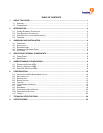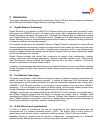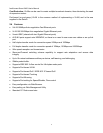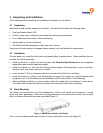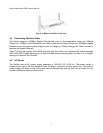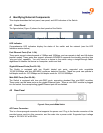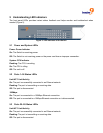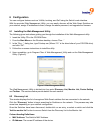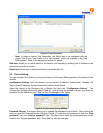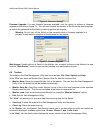
2 Introduction
This chapter describes the features of the freeConnect Smart 2420 and some background information
about Ethernet/Fast Ethernet/Gigabit Ethernet switching technology.
2.1 Gigabit Ethernet Technology
Gigabit Ethernet is an extension of IEEE 802.3 Ethernet utilizing the same packet structure, format,
and support for CSMA/CD protocol, full duplex, flow control, and management objects, but with a
tenfold increase in theoretical throughput over 100-Mbps Fast Ethernet and a hundredfold increase
over 10-Mbps Ethernet. Since it is compatible with all 10-Mbps and 100-Mbps Ethernet environments,
Gigabit Ethernet provides a straightforward upgrade without wasting a company’s existing investment
in hardware, software, and trained personnel.
The increased speed and extra bandwidth offered by Gigabit Ethernet is essential to coping with the
network bottlenecks that frequently develop as computers and their busses get faster and more users
use applications that generate more traffic. Upgrading key components, such as your backbone and
servers to Gigabit Ethernet can greatly improve network response times as well as significantly speed
up the traffic between your subnets.
Gigabit Ethernet enables fast optical fiber connections to support video conferencing, complex
imaging, and similar data-intensive applications. Likewise, since data transfers occur 10 times faster
than Fast Ethernet, servers outfitted with Gigabit Ethernet NIC’s are able to perform 10 times the
number of operations in the same amount of time.
In addition, the phenomenal bandwidth delivered by Gigabit Ethernet is the most cost-effective method
to take advantage of today’s and tomorrow’s rapidly improving switching and routing internetworking
technologies.
2.2 Fast Ethernet Technology
The growing importance of LANs and the increasing complexity of desktop computing applications are
fueling the need for high performance networks. A number of high-speed LAN technologies have
been proposed to provide greater bandwidth and improve client/server response times. Among them,
100BASE-T (Fast Ethernet) provides a non-disruptive, smooth evolution from the current 10BASE-T
technology. The non-disruptive and smooth evolution nature, and the large installed market base,
virtually guarantees cost-effective and high performance Fast Ethernet solutions.
100Mbps Fast Ethernet is a standard specified by the IEEE 802.3 LAN committee. It is an extension of
the 10Mbps Ethernet standard with the ability to transmit and receive data at 100Mbps, while
maintaining the CSMA/CD Ethernet protocol. Since the 100Mbps Fast Ethernet is compatible with all
other 10Mbps Ethernet environments, it provides a straightforward upgrade and takes advantage of
the existing investment in hardware, software, and personnel training.
2.3 VLAN (Virtual Local Area Network)
A VLAN is a group of end-stations that are not constrained by their physical location and can
communicate as if a common broadcast domain, a LAN. The primary utility of using VLAN is to
reduce latency and need for routers, using faster switching instead. Other VLAN uses include:
Security: Security is increased with the reduction of opportunity in eavesdropping on a broadcast
network because data will be switched to only the users within the same VLAN.





